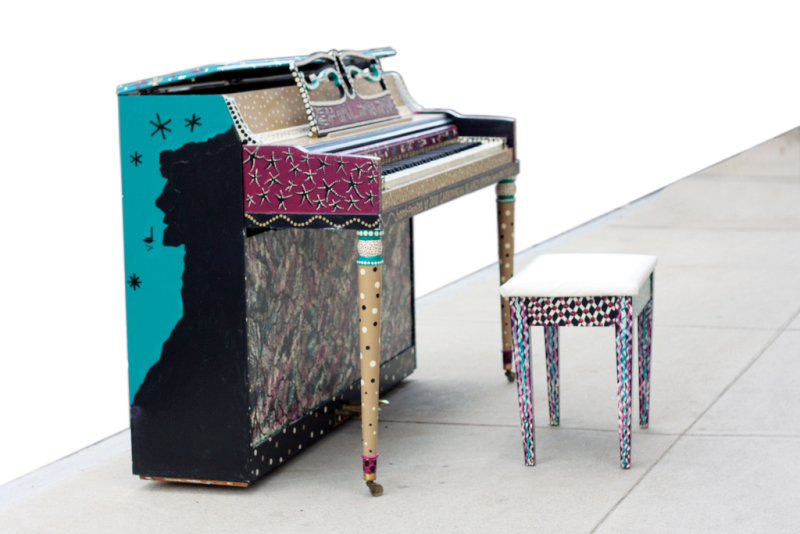Central Question:
What is a public good?
Population of Littleton, N.H.: 4,412 (as of the 2010 census); Most famous resident: Eleanor Porter, author of Pollyanna; Most infamous resident: G. G. Allin, scum-rocker who wrote “Expose Yourself to Kids”; Abraham Lincoln’s answer to central question: “The legitimate object of government is to do for a community of people, whatever they need to have done, but cannot do at all, or cannot so well do for themselves, in their separate and individual capacities”; Distance from Littleton, N.H., to Lincoln, N.H.: twenty-four miles down I-93, through the state park; Nearby landmark (defunct): the Old Man of the Mountain, New England’s most famous rock formation, whose chin fell down in 2003
During the summer of 2011, the town of Littleton, New Hampshire, kept at least five pianos in the open air, on Main Street or close to it, decently tuned and ready for pedestrians to play. We saw them twice. The first day, when we came for the farmers’ market, we found a glossy white upright with at least one B-flat broken, next to a mansion-like old-age home with the hard-to-spell Ammonoosuc River chirping nearby.
Main Street, by contrast, was less quaint than quirky: that’s where we spent an hour on Monday, and that’s where we found two other pianos, the first an upright painted a fiery, spangled red-orange, the second a spinet in aquamarine, with the swirly black legend be glad— make music on top. Our five-and-a-half-year-old son sat down to improvise; when he stood up, a gregarious teen in a plain white T-shirt sat down and performed a fortissimo instrumental version of the theme from Donnie Darko. The spinet abutted a music store; we bought kazoos.
Why the pianos? Who put them there, who paid for them, and who covers them (or pays somebody to cover them) when it rains? British artist Luke Jerram invented the project; he coordinates the placement of pianos on streets and sidewalks in locales from Malta to Sydney to Austin, Texas, places almost all much larger than this town. Pianos came to Littleton thanks to local retiree Dave Ernsberger, who told a New Hampshire newspaper that he hoped they could unite a divided town. I’m not sure exactly what divided it, although there is a regional controversy over power lines, and a local one about a deputy chief of police.
Littleton competes with other White Mountains towns for tourist revenue, and the Littleton Piano Project— which got press as far south as Boston—was surely a tourist attraction. But it was also a public good, a collaboration of sorts between the town and the private funders and everyone who stopped to perform, or to hear, a couple of notes. It was public in almost every sense of that word—shared, not-for-profit, belonging to a community, devoted to participation in a collective good. It was also (not...
You have reached your article limit
Sign up for a digital subscription and continue reading all new issues, plus our entire archives, for just $1.50/month.
Already a subscriber? Sign in





